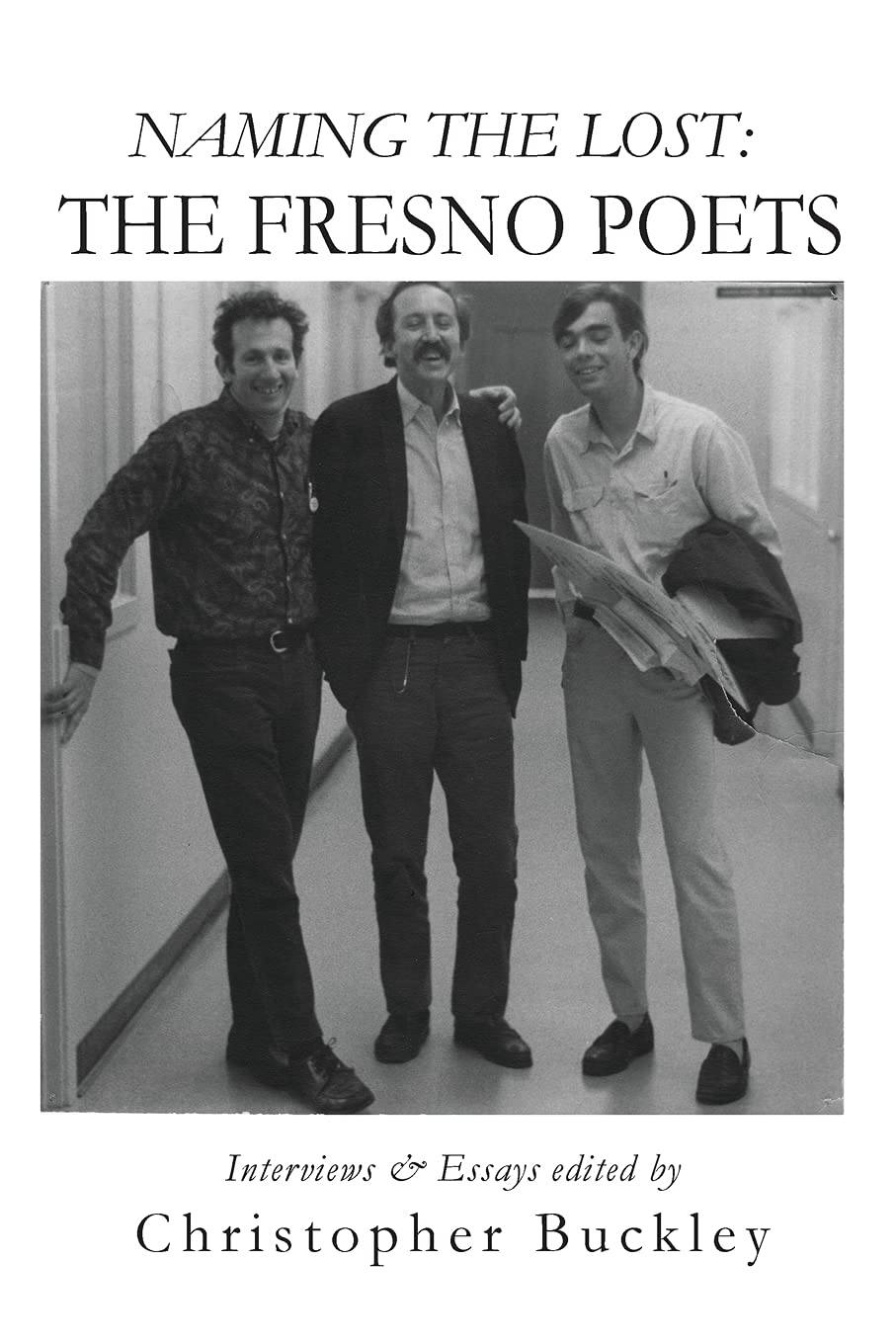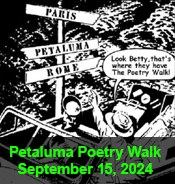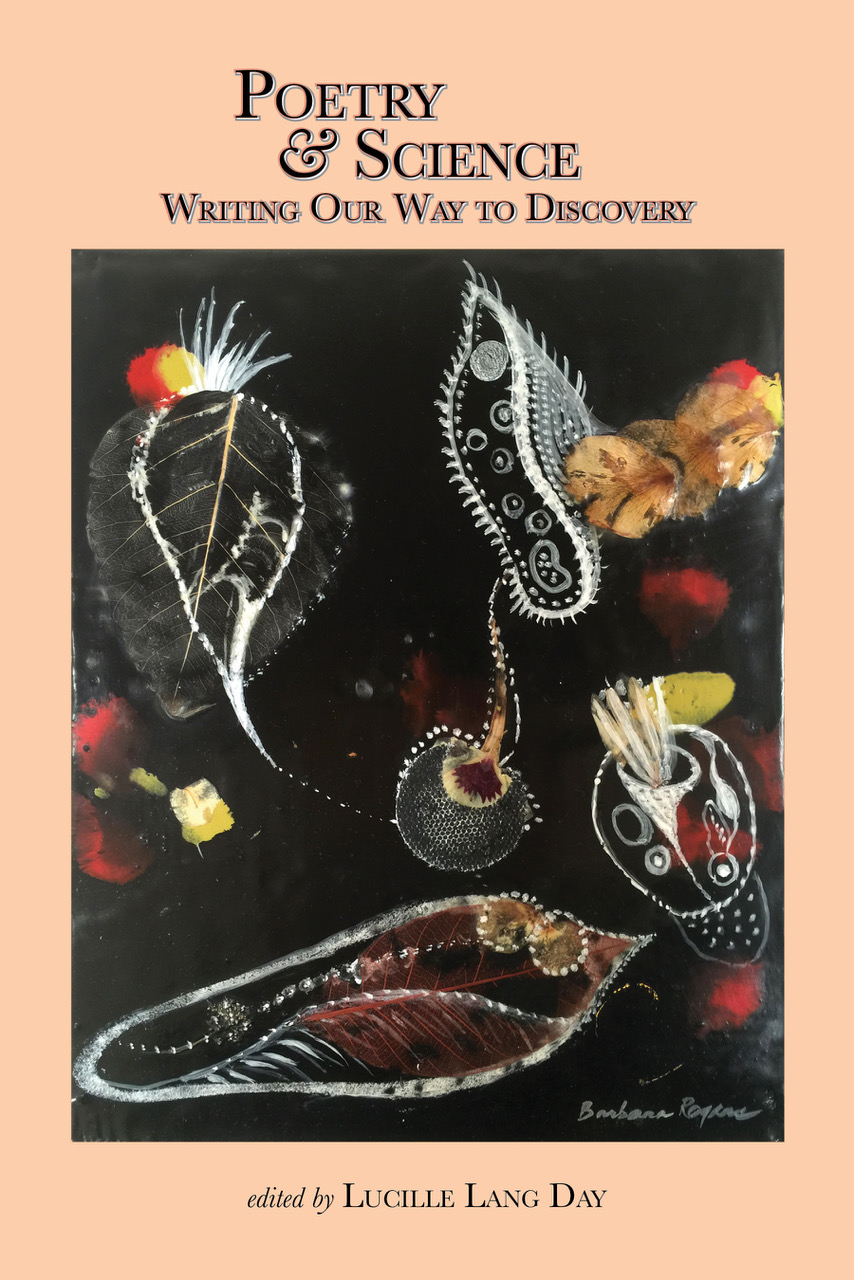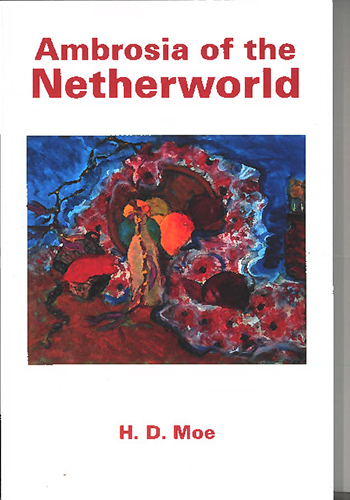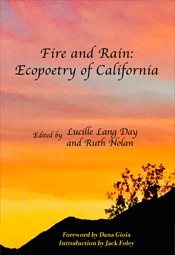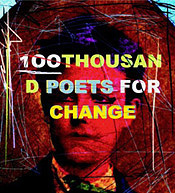
The Whale's Breath
by Susan E. Gunter
Catwalk, Meryl Natchez, Longship Press, San Rafael, California, 2020, 99 pages, $16.95 paperback, www.longshippress.com.
MERYL NATCHEZ'S LATEST volume of poetry contains seventy-nine poems, poems employing an abundance of forms, including haibuns, cinquains, looseplexes, odes, free verse, and prose poems. The poet's roving consciousness twists through the narrow catwalks of these varied lyrics. A term coined in the nineteenth century, a catwalk was originally a narrow walkway on ships or backstage at theaters; walking on them required balance. These poems, too, are balanced, between a sort of reverent awe at the world, with its apricot moons and pine needle shadows, and a regret for its inevitable sorrows: injustice, death, the implacable lasso of grief. In the end, the book affirms the value of a lived life.
The text is divided into five sections, moving from the nearness of family in the initial section, through a section titled "Brief Poems on Physics," to a conclusion, "Praise," with its hymns to a world governed by both the laws of physics and the laws of the spirit. Natchez plays with form throughout, moving easily among haiku, sonnets, prose poems, even visual poems. Paired poems, dedicated to Forrest Gander who used this method, are mirror reversals of one another: the second poem is the first in reverse order. In her poem made of a dozen couplets, "Full Circle, A Diptych," the first line becomes the last, and so on. For example, the first poem begins "For which it turns out you are the cause: / here they are, flawed human beings with adult problems," and the second poem ends "here they are, flawed human beings with adult problems / for which it turns out you are the cause." The first section might have been strengthened by omitting a couple of the poems. "Children" seemed overly abstract in comparison with the specificity of the other poems in this section. "Apology to Mrs. Joliffe 47 years too late," concerning her accidentally knocking down an older woman and making her break her hip, seems unrelated to the section's other poems, which concern the narrator's own relationships.
Natchez maintains a laser-like focus on the reality that she perceives. In Section I, "Heart of the Matter," in poems like "Gemstone," she hones in on a worn patch in her enameled sink, its "one black star of use," chronicling these ordinary bits of daily life and allowing them to add up to more than they might appear. This patch becomes a metaphor for her marriage, an objective correlative for the endurance of love. She gives us "daily wonder" and on the next page that wonder becomes, "reality just stuck in this slightly sweaty body in the here and now." She scans the world for the unusual that arises from the mundane: Dolloff cave spiders, daffodils as perfumed strumpets, an apricot moon, shrimp-shell fingernails. Her reality transcends the ordinary.
She reminds us, though, that above all we live in a physical world: we "move along the skin of this earth / Married like enamel to the tooth" (page 69). Tropes of human sexuality, human reproduction, human death—all remind us of our embodied reality. Hers is not a Descartean mind/body split: body and spirit are intertwined, equal. The love poems to this speaker's long-term partner are particularly strong, as they emphasize the interrelatedness of mind and body. The free verse poem "Why size has almost nothing to do with it" portrays the lover washing dishes. "[N]othing sexier than his hands dripping soap suds, his love handles peeping out from his shirt." Watching him leads the narrator to an explosion of desire: "you can't get to him fast enough and even the longest schlong in Cincinnati can't compete," a wonderful combination of sex and humor. This is a marriage where the speaker is "no longer even wondering what you will think," but is "already thinking it."
Frequently Natchez uses light as a trope to illuminate the world that she recreates. In her prose poem "Thinking about Einstein while waiting for the Big Blue Bus," the light becomes a metaphor for our common humanity. This light "spills so generously over sidewalk blue metal chairs five lanes with their cross-stitch of traffic," and after flowing over Jews in Germany stitching yellow stars and all the Hispanic faces at the bus stop, it becomes "the light streaming over everyone." In "Grammar," with its invocation of Nietzsche asking why we need God when we have grammar, she gives us a radiant world where "the light / glides over the Golden Gate and creates a rainbow." And in "Forever," "the light changes / again and again" while lives around her intersect.
She finds her own answer to the puzzle of life's impermanence in a sort of Emersonian pantheism. In her couplet poem "The Conservation of Matter," she watches a whale exhaling and then thinks of her dead:
The dead look out from their accustomed photos,
stopped in time, but not altogether silent,
as the last whiff of the whale's breath
transforms into ocean, air.
Here our lives take on other forms after we die, our energy changed into other kinds of matter just as the whale's breath becomes part of the world he travels in. In the subsequent poem, "Lying on the massage table at the mud baths," the narrator tells us, "the cells of me transform into earth ash air as my spirit into yours as you read these words." "Looseplex: Praise" informs us that we should "Finish the job and turn into gossamer. / Exit this life into ashes and pure air," the Looseplex, a form Natchez invented based on Jericho Brown's Duplex, a sonnet form in couplets.
This lyrical and largely affirmative collection ends with no answers, just an exhortation to "go on / living on this earth." ![]()
Susan E. Gunter is Professor of English Emerita at Westminster College, and a member of the Northern California Book Reviewers. She's the author of My Vacation at the Beach: A Love Story, and three books on America's foremost intellectual family, the Jameses: Dear Munificent Friends: Henry James's Letters to Four Women, Dearly Beloved Friends: Henry James's Letters to Younger Men, and Alice in Jamesland: The Story of Alice Howe Gibbens. She lives in Santa Rosa, California.
— posted OCTOBER 2021






